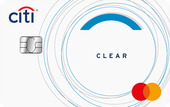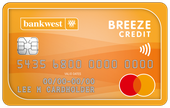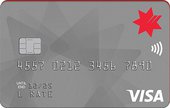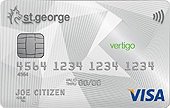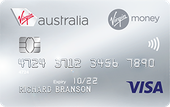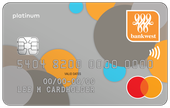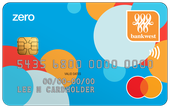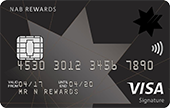
What is a balance transfer credit card?
A balance transfer credit card allows you to transfer the outstanding balance from one or more of your current credit cards to a new credit card with a lower interest rate. The primary objective is to pay off the existing balance more quickly while saving on interest charges.
Certain credit cards come with balance transfer offers, which provide a reduced interest rate on the transferred balance for a specific 'balance transfer period'. The most competitive balance transfer deals offer a 0% interest rate, with balance transfer periods typically ranging from six months to two years and sometimes even longer on select cards.
Once the introductory period ends, any outstanding balance on the new credit card will be subject to the standard credit card interest rate. It's important to note that balance transfers can be made using either personal or business credit card balances.
When considering a balance transfer, it's essential to compare the available offers and carefully review the terms and conditions to ensure you select the best credit card that suits your financial situation.

How much money could you save with a 0% balance transfer?
How much you could save with a 0% balance transfer depends on your existing balance and the interest rate on your current card. For example, if you have $5,000 in debt on a card with a 20% interest rate, you’d be paying around $1,000 in interest over a year.
By transferring that balance to a card with a 0% interest offer for 12 months, you could save that $1,000—provided you pay off the balance before the offer ends.

Helpful tip.
Calculate how much you could save with a balance transfer card
Use our balance transfer savings calculator below to see how much money you could save!

An expert opinion on balance transfer cards

Credit Card Compare credit card editor, Vidhu Bajaj, explains further on getting rid of credit card debt by using a balance transfer card and what you should avoid.
"The primary goal of a balance transfer credit card is to help you eliminate your credit card debt. To maximise the benefits, aim to pay off your transferred balance during the low or zero interest rate period. If you carry a balance beyond this period, your debt could become even more expensive.
You can calculate your monthly repayments by dividing the total debt by the number of months in the introductory period. Ensure you can make this payment each month to clear your debt within the duration. You should avoid making new purchases on the card during this period, as they may incur a higher interest rate."

What to consider before applying for a balance transfer credit card
Most people apply for a balance transfer credit card to repay their credit card debt in a short period of time. However, it's crucial to be realistic about your ability to repay the transferred amount within the low or 0% interest period. If you can't clear the balance in this time frame, you might face higher interest rates, potentially increasing your financial burden.
Here are some things to consider before applying for a balance transfer credit card to make an informed choice.
- Interest rate. The low or 0% introductory interest rate on the card typically lasts from six months to two years. Make sure you review the interest rate that will apply once the promotional period ends to avoid any unpleasant surprises.
- Fees and other charges. Be aware of any balance transfer fees, annual fees, or other charges associated with the card. Some credit card providers may charge you a percentage of the amount being transferred (commonly around 2-3%), which could add to your costs.
- Credit limit. Ensure the new card has a sufficient credit limit to accommodate the balance you intend to transfer.
- Credit score. Your credit score plays a significant role in determining your eligibility for a balance transfer offer and the terms you're likely to receive.
- Debt management. A balance transfer credit card can help you manage your credit card debt by potentially saving you money in interest charges. However, a balance transfer credit card is typically useful for those who can commit to timely repayments. Missing payments can lead to penalties and hurt your credit score
If you're in serious financial trouble or struggling to manage your debts, transferring your balance to another credit card may not be the right solution for you. Consider seeking help by contacting the National Debt Helpline or visiting the MoneySmart website for more information on debt and financial hardship management.

Here’s how a Credit Card Compare expert chose his balance transfer card

When Credit Card Compare co-founder David Boyd compared balance transfer cards and explains what he was looking for.
After Covid I had racked up some credit card debt and needed a solution that wouldn’t strain my income. After comparing balance transfer options, I decided to go with theANZ Low Rate Card. My main priority was finding a card with the longest 0% interest period, and the ANZ Low Rate Card offered 0% p.a. on balance transfers for 28 months. At that time, that was better than most other options.
Every dollar saved counts when you’re trying to beat down the debt on a card. I considered other cards, but ANZ had no annual fee for the first year, a reasonable balance transfer fee, and a competitive revert rate after the intro period. For me, it was the perfect balance of long-term savings and manageable costs.

How Australians are using balance transfer credit cards
Many Aussies are debating whether to use a 0% balance transfer card to get their debt under control or to use other means, such as emergency savings.
For example, on Reddit a user asked if doing a 0% balance transfer was a good idea to reduce the interest paid on $9,400 of debt on two cards.
Another Redditor said that they had used credit card balance transfer offers to reduce their debt:
"14k in debt now down to 2k and not a cent in interest paid."
One particularly financially astute Redditor shared an innovative balance transfer use case:
"Paid for $20k trip on credit card. Balance transfer for 1% at 0% interest for 24 months. Put the $20k I would have used to pay the credit card with into super for carry forward contributions. Claim 30% tax credit and keep that in my offset for 2 years saving me about $800 interest. Also collecting 2 years of interest in my super on that $20k. So in all for a small 1% fee of $200 I'm gaining nearly $10k over 2 years. Essentially cutting my trip costs by 50%."

Balance transfer terms to know about when comparing balance transfer credit cards
Before applying for a balance transfer card, ensure you choose the one that best suits your financial needs. Research and compare multiple balance transfer offers to find the best deal for your situation.
- The introductory interest rate. Choosing the lowest possible introductory rate can help reduce the interest charges on your transferred balance during the offer period.
- The length of the introductory offer. The duration of the low or 0% interest rate period typically ranges from a few months to a couple of years. A longer promotional period could give you more time to repay your balance without incurring interest.
- Revert rate. The revert rate is the interest rate that applies after the promotional period ends. Knowing the revert rate is crucial if you cannot repay the balance within the promotional period, as it will impact your future repayments.
- Balance transfer fee. This refers to the fee charged to transfer your balance. It is usually a fixed amount or a percentage (1-3%) of the balance transferred. Finding a low or waived balance transfer fee can help ensure that the costs do not offset the interest savings.
- Annual fees and other charges. A low or no annual fee card could help reduce overall costs, especially if you plan to hold the card long-term. It is also worth comparing other potential charges, such as any late payment fees or foreign transaction fees, to understand the real cost of the card to you.
- Interest-free days. Most cards offer a certain number of days where you are not charged any interest on purchases. However, balance transfer cards typically don’t offer any interest-free days on new purchases.
- Rewards and benefits. Some credit cards may offer additional rewards like cashback, balance transfer offers with Qantas Points or Velocity Points. You may want to check whether a card offers any extras, and if you need to pay any additional fees for these features.

4 simple steps.
How to do a credit card balance transfer
Transferring your credit card balance to a new card can take anywhere from a few days to three or four weeks, depending on the card issuer and the complexity of your application.
1. Determine the balance transfer amount
Calculate the total amount you need to transfer to your new balance transfer credit card. You can usually transfer balances from multiple cards if necessary.
3. Apply for the credit card
Research and compare various balance transfer offers and apply for the one that best fits your financial needs. The application process is generally quick, but your approval could take several days. When submitting your application, you’ll most likely need to provide details about the balance transfer amount and the existing credit card provider(s). You’ll also need to provide information about your income and expenses and include proofs such as your payslips and bank statements.
2. Verify your eligibility
The new credit card will have specific eligibility criteria you must meet, including income requirements and a minimum credit score. Make sure you review these criteria before applying. Consider checking your credit score beforehand to assess your chances of approval.
4. Activate the new card and close your old account
Once approved, your new provider will assist you in setting up online banking, enabling you to manage your card from your mobile device. If the balance on your old card has been fully cleared, consider closing the account entirely to prevent any further spending or incurring fees.

Get the most out of your card.
How to maximise your 0% balance transfer savings
A 0% balance transfer can save you a lot in interest, but here’s how to maximise those savings:
1. Transfer your balance ASAP
Initiate the transfer immediately to stop interest from accruing on your old debt. Most offers require the transfer to be done within a set period.
3. Set a repayment plan
Pay off as much as possible during the 0% period. A clear plan helps you avoid interest when the promo ends.
2. Keep paying your old card
Until your balance transfer is confirmed, continue making payments on your old card to avoid damaging your credit score.
4. Don’t miss payments
Missing a payment could void your 0% offer, so stay on top of your repayment schedule to keep the deal intact.

Expert opinion on the mistake people make most often with balance transfers

Andrew Boyd, co-founder of Credit Card Compare, explains what the biggest mistake Australians make when taking out a balance transfer.
Balance transfer cards offer significant interest savings if you stay committed to paying off the transferred balance without adding new debt. One of the biggest mistakes is only paying the minimum monthly repayment and continuing to spend, which can leave you with even more debt than you had before.

Benefits of a balance transfer credit card
Some benefits of using a balance transfer credit card include lower interest rates, debt consolidation, and savings on interest charges.
1. Save on interest
If you have a credit card balance of $5,000, with a purchase rate of 18%, and make $300 monthly payments, without any additional purchases, you will pay off your card in 20 months. However, you'll pay $796 in interest during that period.
By transferring your $5,000 to a balance transfer credit card offering 0% p.a. interest for 18 months, you can pay off your debt three months ahead and save on the almost $800 in interest. Those carrying higher balances stand to save thousands with an interest-free balance transfer offer.
2. Pay off your credit card debt faster
You can pay off your debt faster when interest is not adding up month by month. This is because your entire monthly payment goes towards paying off the principal amount. Paying more than the minimum repayment accelerates this.
3. Balance transfers can simplify your finances
Debt consolidation refers to taking out one facility to pay off a number of different balances. Consolidation makes debt management easier because you are less likely to lose track or miss payments. With an interest-free balance transfer offer, you can also reduce the total interest you end up paying.
4. They can reduce financial stress
Grappling with credit card debt can be very stressful, especially if you are struggling to keep up with repayments. If it starts affecting your mental health, seek help if needed with the National Debt Helpline, who offer anonymous assistance.
Transferring debt to a balance transfer card with low or no interest can help you relieve that stress and free up money to make progress towards getting out of debt.
5. May help improve your credit score
A balance transfer can lower your overall credit utilisation ratio, or the level (percentage) to which you are using your credit limit. This matters because credit utilisation plays a role in determining your credit score.
